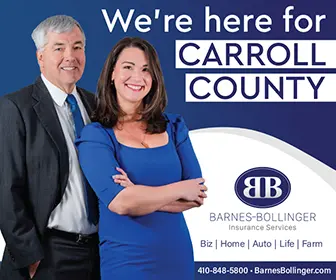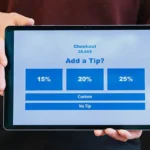
by Amana Milewski
Asher’s foster mom “tries her best to give us the world,” he said. “But the truth is anything she does is beyond enough, at least for me.” She’s “always there for me, even if it is just to complain about my day.”
Asher, who has been in other foster homes, said he feels like part of the family. “Honestly, [my foster mom] just taking me under her wing has made the biggest difference. She loves and cares for me just like I was her biological child.” (We are using only first names in order to protect the privacy of the children and their families.)
Most often it is the basic things that can make a world of difference to a foster child. With foster parents who provide a stable home life, care and compassion, foster children can see themselves with unlimited futures.
Asher is working hard to finish high school on a positive note. Although he said he still takes things one day at a time, he hopes to have a career in family law. That he dreams about a future in which he makes a positive impact on others is a testament to the love and support his foster mom provides.
That type of love and support is provided by Carroll County’s 19 licensed foster moms. Although the number of foster children fluctuates — between 45 and 75 in 2020 — there are only so many children 19 moms can care for.

Carrie Vincent, assistant director for services in Carroll County’s Department of Social Services, said that as of Dec. 1, 2020, 40 percent of Carroll County foster youth were placed out of the county due to a lack of resources.
“As a result, these youth are not only separated from their parents, but their peers, community supports and schools,” Vincent said. “This number reflects our need to continue to license families willing to foster a wide range of children’s ages and needs.”
Siblings at Heart
Foster mom Shelly knows firsthand about caring for children with a wide range in ages. She and her husband have four biological children — two older children in the military and two daughters — and they took in two foster brothers.
Shelly became interested in fostering through volunteering with Together We Own It and Rise Up, both local nonprofits serving underprivileged youth. “In talking with adults who ran the programs, we discovered there was a big need for foster parents in Carroll County,” she said.
A month before they were fully licensed as foster parents, they were contacted about brothers who were 7 and 8 years old. “They thought the boys would be a good fit with our family, Shelly said. “We started seeing them regularly and they really meshed well with our girls,” who were 9 and 10. Once they were licensed, the boys moved in.

Not surprisingly, being a foster mom means more juggling. In addition to daily activities like school and sports, Shelly coordinated visits with the boys’ biological mother, and therapy and doctor’s appointments, which all had to be completed within a certain time. “We made sure our schedule revolved around the things they had to do,” she said.
In addition to dealing with the kids at home, Shelly also juggles kindergartners as a full-time teacher, on campus four days a week and virtually on Wednesdays. Her three younger children attend school in her building and her oldest daughter is in middle school. On virtual learning days, she teaches from a home office in the basement and all of the children have their own learning space.
Shelly added that all of the extra work is well worth the effort. “When we started this journey, I second-guessed whether I could do this. I get attached to everything, but the thought is always in the back of your mind that they might go back to their families.”
“Reunifying children with their biological parents is the primary goal in every case,” Vincent said, but that is not always possible. “Despite intensive efforts, sometimes children cannot return home to their parents. Should a child become legally free for adoption, the foster family often becomes the adoptive resource,” she continued.
Such became the case with Shelly’s foster sons. Shelly, who was herself adopted at birth with her twin sister, knows the difference a loving family and stable home life makes. So after four years in other foster care and a year in Shelly’s home, the boys were officially adopted by them in May 2019. It was the first virtual adoption in Carroll County.
“They love everything we do for them and they are so thankful,” Shelly said of her young sons. “They help make me a better mom.”

Teamwork and flexibility
Foster mom Leah’s husband was in foster care for a short time, and the in-home daycare family who cared for her became a foster family while she was there. These experiences inspired the couple to give back to the program that had helped shape their childhoods.
Their original plan was to wait until their two older children had graduated. But the older ones asked why they should wait — they wanted to be part of the experience. “We run the household as a team,” Leah said, “so it was awesome to have them be part of that decision.” Leah and her husband have five biological children, age 17, 15, 14, 11 and 2.
Although they don’t currently have a foster child, they had a long-term placement with a 15-month-old when their youngest had just turned 1, and then they had a short-term placement with a teenager. Having biological children ranging from a toddler to teens certainly prepped Leah for the varying needs of her fosters.
Vincent said children can enter foster care from birth until age 18. “Children come to us with a variety of strengths and unique needs. It is our responsibility to place each child regardless of his or her needs.”
Leah’s fosters definitely needed different things. The infant “needed an advocate who was willing to fight” for him and to navigate the network of people involved in his care. The teenager needed a positive force in her life and someone to listen, care and “to let her know she does have a say and that she will be heard,” Leah said.
Often you know the child’s name and age but little else, Leah said. For instance, Leah’s her infant foster child was diagnosed with some sensory issues that required extra help and intervention. Understandably, COVID made access to resources much more difficult.

Leah’s family operates with an “all hands on deck” mentality, with everyone pitching in to help. Sometimes that includes extended family. When Leah works — from home as a cosmetologist — her sister-in-law and great-aunt watch the kids. Fortunately, Leah was already working from home prior to becoming a foster parent. She previously owned a large salon, but when one of her daughters was born 4½ months prematurely, she transitioned to a full salon set-up at home.
“This is the hardest, most rewarding thing I’ve ever done,” Leah said. “I am constantly reminded of all the amazing things that can come of it … learn to be a better spouse, a better parent and a better person in general. You grow in ways you didn’t prepare for.”
‘One Night to Forever’
Like Shelly and her family, foster mom Jenn and her husband adopted a foster child and are still available for future placements.
Jenn’s son was with them only 9 months before they adopted him in November 2019 at age 4. Their situation was urgent since the boy had been in numerous foster placements before being placed with them.
“The length of time a youth may need to be fostered is open-ended,” said Vincent. “During training, we ask families to respond to the call of ‘one night to forever’ — a way of thinking about being available as long as the child needs.”
“Forever” came quickly for Jenn. “I was given the honor to become our foster son’s permanent mom! There is no greater honor,” she said.
“I always loved working with children and families and wanted to make a meaningful difference in people’s lives,” Jenn said. “What better way to make a difference in someone’s life than to care for and love a child while working with their biological parents to ultimately reunite them in a healthy situation and home.”
Jenn works full-time as an office administrator at a church in Ellicott City. “I am very fortunate to have a boss who fully supports me being a mom and a foster mom and allows me to be flexible when I need to be,” she said.
And while flexibility is critical, communication and planning also are key. “My calendar is my best friend,” she said. She had her husband divide up responsibilities each week and adjust schedules accordingly.
Some of those responsibilities have included coordinating visits with biological parents, requiring foster parents to maintain relationships with them for the benefit of the child. Jenn has worked with numerous biological parents to plan and make those visits happen.
“Foster children maintain connections with their biological parents through regular visits, one to two times per week,” Vincent said. “We [invite] foster parents to be resources, not only to the child, but also the child’s parents. Parents talk by phone, text and attend medical and educational appointments together.”
One responsibility that can’t be divided up, however, is self-care. Jenn remarked that the lack of time to herself was one of the biggest changes to life as a mom and foster mom. “I have to schedule some time [to] regroup and recharge. I also schedule time to spend with my husband. Those two things are needed to keep myself and my marriage strong and ready for any challenges we’ll face.”
In addition to providing her son a stable home life, “love, respect and the ability to make mistakes” are the most important things Jenn teaches her son. “I do my best to model how to love correctly, how to respect others and ourselves, and that it’s perfectly OK to make mistakes and have big feelings.”
It is important for her son to “learn how to laugh and have fun as a family,” Jenn stated. “It seems so simple, but a lot of times this is a big part of family life that’s missing. Laughter sometimes truly is the best medicine for the heart and mind.”
First Steps to Fostering
The need is great for foster parents in Carroll County.
“We cast our home-finding net wide in hopes of finding appropriate families for our children. We are always looking for additional families to foster,” said Carrie Vincent of the Carroll County Department of Social Services.
Wondering how to become a foster parent?
The first step is to attend an orientation (now held virtually) for an overview of the foster care process, Vincent said.
“From there, perspective parents participate in an at-home consultation,” she continued. The consultation is followed by foster parent training, including a formal home-study process.
On average, the process takes four to eight months and includes a criminal background check, medical examination, a home inspection and 27 hours of pre-service education, among other things. Foster parents must be licensed and then relicensed annually. New foster parents are assigned mentors within the program and later become mentors themselves.
“If you are thinking about becoming a foster parent, do it,” encouraged foster child Asher. “Don’t think twice because there are children who want and need loving homes. They need a safe space to come home to and people to love them. You could be the change in their life.”
“Families sometimes worry about making an impact to a child on a short-term basis,” Vincent said. “Providing a safe and supportive home to a child even for one night when she is most vulnerable makes a lasting difference.”
Those who are interested in learning more about foster parenting should email Susan Beard at susan.beard@maryland.gov.













